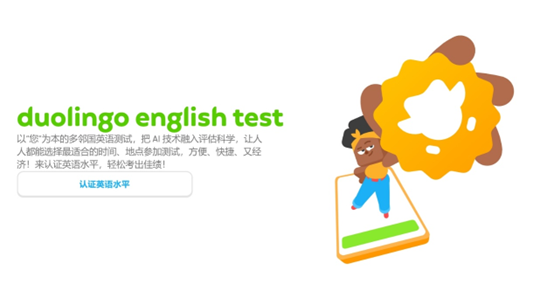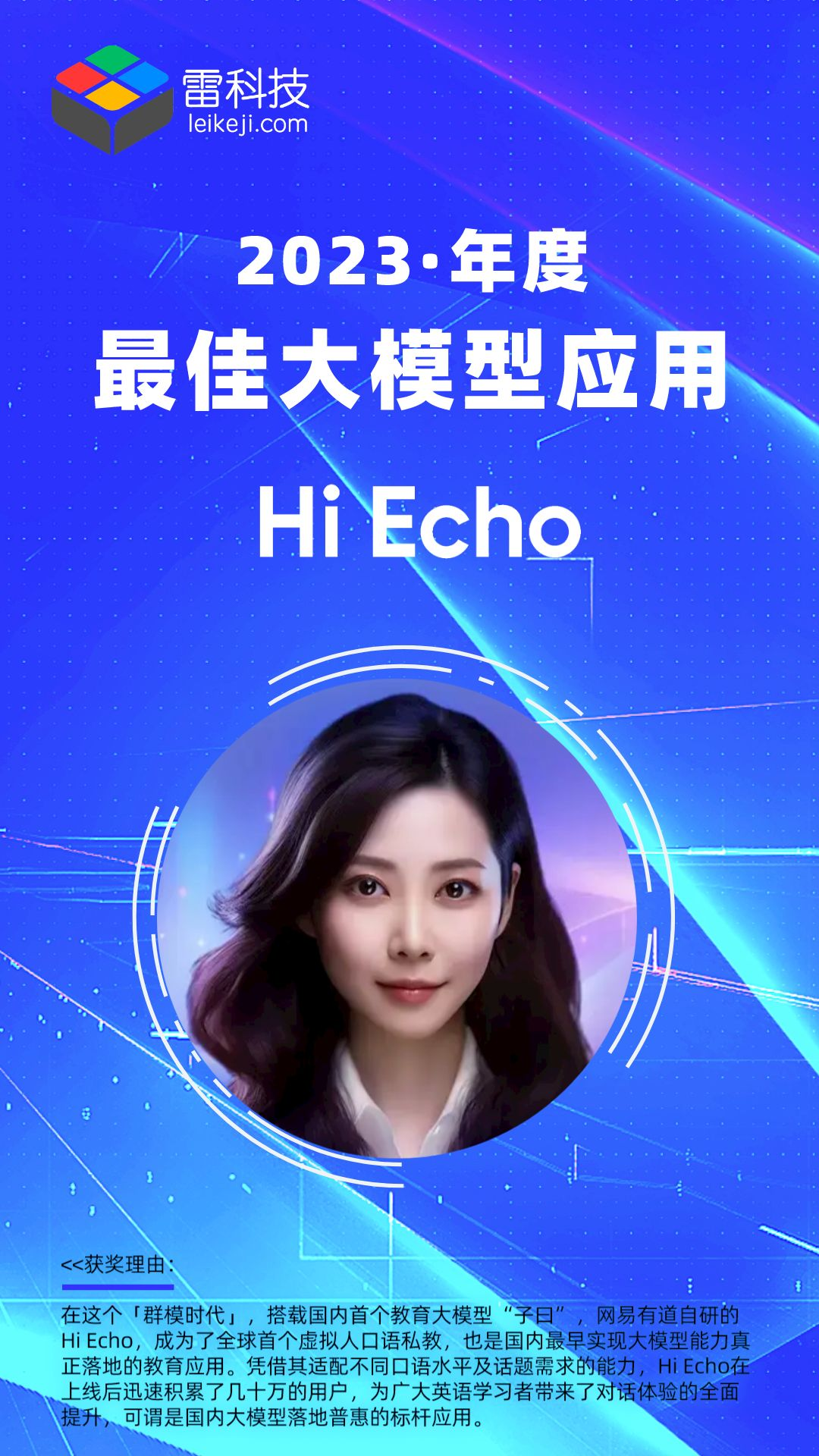Source: Lei Technology

Image Source: Generated by Wujie AI
At the beginning of 2023, the cognitive intelligence represented by ChatGPT has shown us the potential of artificial intelligence.
Different from traditional artificial intelligence, ChatGPT relies on large models, big data, and powerful computing to achieve revolutionary breakthroughs in the most challenging field of natural language processing, achieving "human-like" language understanding, knowledge retention, and logical reasoning, and reinforcing learning through human feedback to ensure that the answers meet expectations.
But what we are most concerned about is how such large models will impact our lives?
Therefore, like a high-speed train, in the second half of 2023, large models quickly entered a new stage—from technology to commercialization. Office applications like Microsoft Pilot and social applications like CallAnnie, countless large model applications quickly gained popularity on the Internet.
Among the many applications, the most eye-catching is actually the education industry.
As one of the most essential public functions in society, education has always played a key role in guiding social progress. At the same time, the characteristics of this field also provide ample room for imagination for large models + education. Previously, OpenAI founder Altman has expressed his strong interest in two AI application areas: medical consultation and personalized AI education tutoring.
As the year comes to an end, let's review together the events related to large models in the education industry that have occurred throughout the year and discuss how large models have brought changes to the relatively sluggish education market. As we approach 2024, which product will receive the "Annual Best Large Model Application" award from Lei Technology?

(Image source: Pexels)
Few high-quality large model applications, innovation space is worth looking forward to
The AI large model industry in China did not start early, and although it has made rapid progress in the past two years, there is still a certain gap compared to the global AI industry center in the United States. This gap is not reflected in the number of large models; on the contrary, there are signs of oversupply of basic large models in China. The real gap lies in the commercial application and industrial landing of large models—while we have an abundance of large models, we lack high-quality large model applications.
This is not just the opinion of a few individuals, many industry leaders share similar views.
Baidu CEO Robin Li is a loyal supporter of AI industrialization. He once lamented at a public event that while there are hundreds of native AI applications abroad, in China, despite having basic large models, "few people can name one or two native AI applications." Similarly, at the 21st China Enterprise Leaders Annual Conference held on December 10, NetEase Youdao CEO Zhou Feng also helplessly stated that although the development of large models in China is fast, the large model applications that are widely spread on social platforms and captivate users are mostly from overseas developers.
The remarks of these two industry leaders reveal the embarrassing situation of the AI large model industry in China: having mastered advanced technology and developed many basic large models, but the development of applications is too slow.
Currently, popular large model applications in China are either still in the internal testing phase and not fully open, or are criticized by users due to factors such as price and functionality. Some directly add large model plugins to existing applications, making it difficult to find high-quality large model applications that truly stand the test of public opinion.
To deeply integrate large models into various industries, landing applications are the inevitable choice. No matter how advanced the technology is, it can only become a social productivity force and make contributions to the entire economy and society if it is widely accepted by users and widely applied in daily production and life.
Fortunately, the industry leaders are not just talking, they are also taking concrete actions.
As early as June this year, Beijing released the first "Top Ten Industry Large Model Typical Application Cases" list in China, and products developed by companies such as Baidu, Zhipu AI, and Haomo Zhixing were listed. In the second half of the year, major companies continued to make efforts. Baidu released more than ten native AI applications in one go, and Tencent also referred to vertical domain applications as "the future of large models" in its "Big Model Era AI Trend Report."
Under the efforts of various companies, a batch of promising large model applications has gradually emerged in China.
For example, Alibaba's Quark Health Assistant, which has cooperated with over 200 authoritative experts, more than 60 top-tier hospitals, and over 40 medical institutions, provides services such as symptom diagnosis, medical guidance, and medication advice to users. The writer assistant Miao Bi of Yuewen Group is positioned as the "first web literature large model" in the industry, providing functions such as creative assistance, content diagnosis, and Q&A. Netease Youdao's "the world's first virtual spoken English private tutor" Hi Echo was officially launched on October 11 and has now been iterated to version 2.0.
By observing, it is not difficult to find that although these highly acclaimed and popular large model applications are aimed at different industries and groups, they share similarities: they address industry pain points, improve production efficiency, cater to user needs, and enhance user experience.
In fact, not all industries currently have the soil suitable for the landing of large model applications. Industries with digital foundations and technological genes, where companies, practitioners, and users recognize AI large model technology and are eager to improve productivity through technology, are the fertile ground for large model application landing. Most of these representative cases and other high-quality large model applications on the market are concentrated in industries such as e-commerce, finance, education, and travel.
On the contrary, a negative example is the once popular AI portrait mini-program Miao Ya Camera. At its peak, Miao Ya Camera's WeChat index reached 18 million, topped the hot search on Weibo, and received over 3 million views on related topics on Xiaohongshu. It was even dubbed "the first paid AI application for young people" by some media. However, as time passed, the novelty of the app quickly faded, and coupled with controversial data compliance issues, Miao Ya Camera could not escape the fate of being short-lived.
Because in the end, social applications like Miao Ya Camera can only meet users' entertainment needs and cannot yet bring about a qualitative change in social productivity. The appeal of such applications is always short-lived. What can truly stand the test of time are large model applications deeply rooted in the industry, changing the production methods of enterprises and user habits.
Accelerating the landing of large model applications, why does the education industry enjoy special favor?
Among the many large model application cases mentioned above, educational applications are the most attention-grabbing and the most promising branch. There are many reasons why the industry is optimistic about the combination of education and large model applications, and it can be summarized into three points.
First, the traditional education industry has many pain points, and schools, educational institutions, teachers, and students all hope to improve them through technological means. For example, grassroots teachers have limited energy and have to bear a large amount of administrative work in addition to their teaching tasks, which they can no longer bear; students have vastly different abilities and learning habits, making it difficult to implement a one-size-fits-all education.
Second, looking back at history, it can be found that the modern education industry has always attached great importance to intelligence and digitization, leaving its mark in every technological revolution. At the beginning of the millennium, intelligent education hardware began to rise in China and has been continuously iterated: from initial text recognition and speech recognition to later audio reading, real-time translation, and natural language interaction between humans and machines, the functionality has become increasingly rich, and the integration with AI technology has become increasingly deep.
It can be said that the education industry has never lacked technological genes and has always been willing to explore cutting-edge technology. After all, modern education emphasizes innovation and teaches students to use knowledge and technology to transform their lives—starting with the transformation of the education industry itself is entirely reasonable.
Finally, the global implementation of the digitalization strategy in the education sector has accumulated a large amount of data and laid the foundation for training vertical education large models and developing education large model applications. Taking China as an example, relevant departments have been promoting the digitalization upgrade of the education industry and issuing multiple documents to support the development of related enterprises and technologies. Official data shows that China currently has the world's largest education and teaching database, with a 100% network connection rate for primary and secondary schools nationwide.
With favorable conditions and comprehensive preparations, it is not surprising that the explosion of large model applications in the education sector has occurred. Both domestically and overseas, a large number of noteworthy vertical education large models and large model applications developed based on them have emerged this year. Many technology companies, intelligent education hardware enterprises, and online education companies have deeply participated in the new round of technological revolution.
The mobile language learning platform, Duolingo, which fully embraces AI large models, has also seen a surge in performance this year. The financial report shows that in the second quarter of this year, Duolingo's revenue increased by 44% year-on-year to $127 million, with DAU and MAU growing by 62% and 50% respectively, and the DAU/MAU ratio reaching a record high of 29%. Duolingo Max, a product combined with ChatGPT-4, has been well-received, and CEO Luis von Ahn has expressed the intention to continue adding more personalized features in the future.
Expanding course content and improving the speed of script writing through AI large models have received widespread praise from users. Currently, the pricing of Duolingo Max is about twice that of the Super version, and the endorsement of AI large models has doubled its value.

(Image source: Duolingo official website)
Duolingo is just a typical case, not the only one. The American education platform Khan Academy has also developed large model applications using ChatGPT-4, equipping students and teachers with "super AI tutor" Khanmigo. Chegg, which has made a fortune by renting textbooks in recent years, has also been actively transforming into an education technology company, riding the wave of AI large models and collaborating with Google to develop exclusive AI education large models.
Turning our attention back to China, numerous education technology companies are also at the forefront. NetEase Youdao took the lead by releasing the first domestic vertical education large model "Ziyue" in July this year, and launched multiple large model applications developed based on "Ziyue"—including the previously mentioned "Hi Echo" virtual spoken English coach.
In addition, iFLYTEK has successively released the Xinghuo Cognitive Large Model 1.0 and 2.0 versions, driving the accelerated landing of large model + education applications. Xueersi Large Model was also opened for use after passing the review in December this year, and currently embeds AI dialogue, question assistant, and bilingual writing assistant functions in learning machines.
It can be seen that large models and large model applications in education have flourished, dazzling the eyes. At this point, a new question arises—how to select the most reliable application from among them?
The suspense is revealed: Who will win the "Annual Best Large Model Application" award?
Although there are a thousand Hamlets in the eyes of a thousand people, no judgment standard is always correct, but an excellent education large model application must have the following key points.
First, innovative product form.
In terms of online time, Hi Echo is not the earliest in the virtual human conversation product sequence. As early as April this year, Call Annie, known as the "world's first video AI Bot," gained popularity overseas and garnered a loyal following. The biggest difference between Hi Echo and Call Annie is not that one is based in the education industry and the other is popular in the social field, but that the former is a purebred native AI application.
Industry leaders such as Robin Li have emphasized that the value of large models is based on native applications. From a macro perspective, because no one understands AI better than AI itself, products and applications built entirely on AI are definitely closer to the essence of AI than old products reconstructed with an AI shell. In a more detailed sense, Hi Echo, built based on NetEase's "Ziyue" large model, also has advantages in natural language processing, voice interaction, and other aspects over "impurebred" pseudo-large model applications.
Taking conversation as an example, Hi Echo packages the form of spoken language practice into the style of voice chat, allowing users to immerse themselves in the scenario, effectively reducing the embarrassment of performing poorly in front of a teacher and providing a sense of ease as if simply making a phone call. In actual experience, Hi Echo can not only easily respond to user questions but also continue the conversation based on its own persona, helping users continue the dialogue with clever guidance and thought-provoking questions.
Second, having a complete product ecosystem, achieving perfect integration of technology, software, and hardware.
Before this, most language education applications on the market focused on software and content, lacking development in the hardware ecosystem. In terms of software-hardware integration, NetEase Youdao's Hi Echo has also set a good example.
In August of this year, NetEase Youdao released the Youdao Dictionary Pen X6 Pro and Youdao Listening Treasure Pro, two intelligent hardware products, both of which were equipped with the Hi Echo application at the first opportunity. In addition to having technology, content, and software, having a business layout that spans the entire education industry chain is NetEase Youdao's greatest advantage.
Third, practicality that stands the test and gains recognition from the majority of industry professionals, teachers, and students.
As a scarce spoken language private tutoring product on the market, NetEase Youdao's Hi Echo has always adhered to a principle during its development: using the capabilities of large models to solve practical problems in educational scenarios. In the latest iteration of the Hi Echo 2.0 version, the four innovative capabilities have perfectly embodied this concept: ——the addition of spoken language difficulty grading, catering to the user's need for segmented ability levels; a richer virtual human image, meeting the user's demand for more interactive images; more diverse conversation scenarios and more personalized conversation evaluation reports, allowing even English learners with zero foundation to speak English without pressure and rapidly improve their spoken language ability in different contexts, achieving true freedom in English conversation.
By fully meeting user needs and accurately targeting user pain points, Hi Echo naturally wins user love. Data shows that within just one month of its launch, Hi Echo's registered users exceeded 100,000, and its rankings in major app stores have been steadily rising. The usage frequency of the Youdao Dictionary Pen X6 Pro, which carries Hi Echo, in the third quarter is also much higher than that of products without large models during the same period.
Taking into account these evaluation criteria, Lei Technology awards the "Annual Best Large Model Application" to NetEase Youdao's Hi Echo. With comprehensive breakthroughs in innovation, comprehensiveness, and practicality, Hi Echo ultimately receives this honor.

A product design that addresses specific needs has not only earned Hi Echo market recognition but also unanimous praise from the industry. Creating an excellent large model application is not easy, but it is not so difficult either. Perhaps, as Robin Li said, everyone just needs to seize the opportunity early and try as much as possible, and they will eventually find a suitable path.
As the current biggest hotspot on the Internet, large models can be considered a major technological leap in the history of artificial intelligence development, with enormous potential and value.
In the best state, companies in any industry will be able to use standardized AI large models to initiate intelligent upgrades, not only improving work efficiency but also potentially directly changing their original business strategies. Due to its characteristics, the education sector is bound to become the vanguard of large model landing, and online education platforms, Internet technology companies, and technology suppliers have all entered the game.
In my opinion, although there are still some areas that need improvement, the essence of large model education is a more efficient way of learning and applying knowledge from data.
With the support of artificial intelligence, hiring private tutors at high prices has become an option, while the new learning method of "student self-study + AI Q&A" has become a more widespread possibility. Learners can easily access high-quality teaching content at a lower threshold and cost, and the level of personalization and refinement of teaching content continues to increase, allowing each learner to receive suitable learning content.
In other words, when you can access a stable and high-quality one-on-one virtual foreign teacher at a relatively lower cost in both first-tier and third- or fourth-tier cities, will anyone continue to push up the hourly fees for private foreign teachers or compete fiercely?
To break the imbalance in the distribution of educational resources, perhaps we really need to look at the development of artificial intelligence.
免责声明:本文章仅代表作者个人观点,不代表本平台的立场和观点。本文章仅供信息分享,不构成对任何人的任何投资建议。用户与作者之间的任何争议,与本平台无关。如网页中刊载的文章或图片涉及侵权,请提供相关的权利证明和身份证明发送邮件到support@aicoin.com,本平台相关工作人员将会进行核查。




